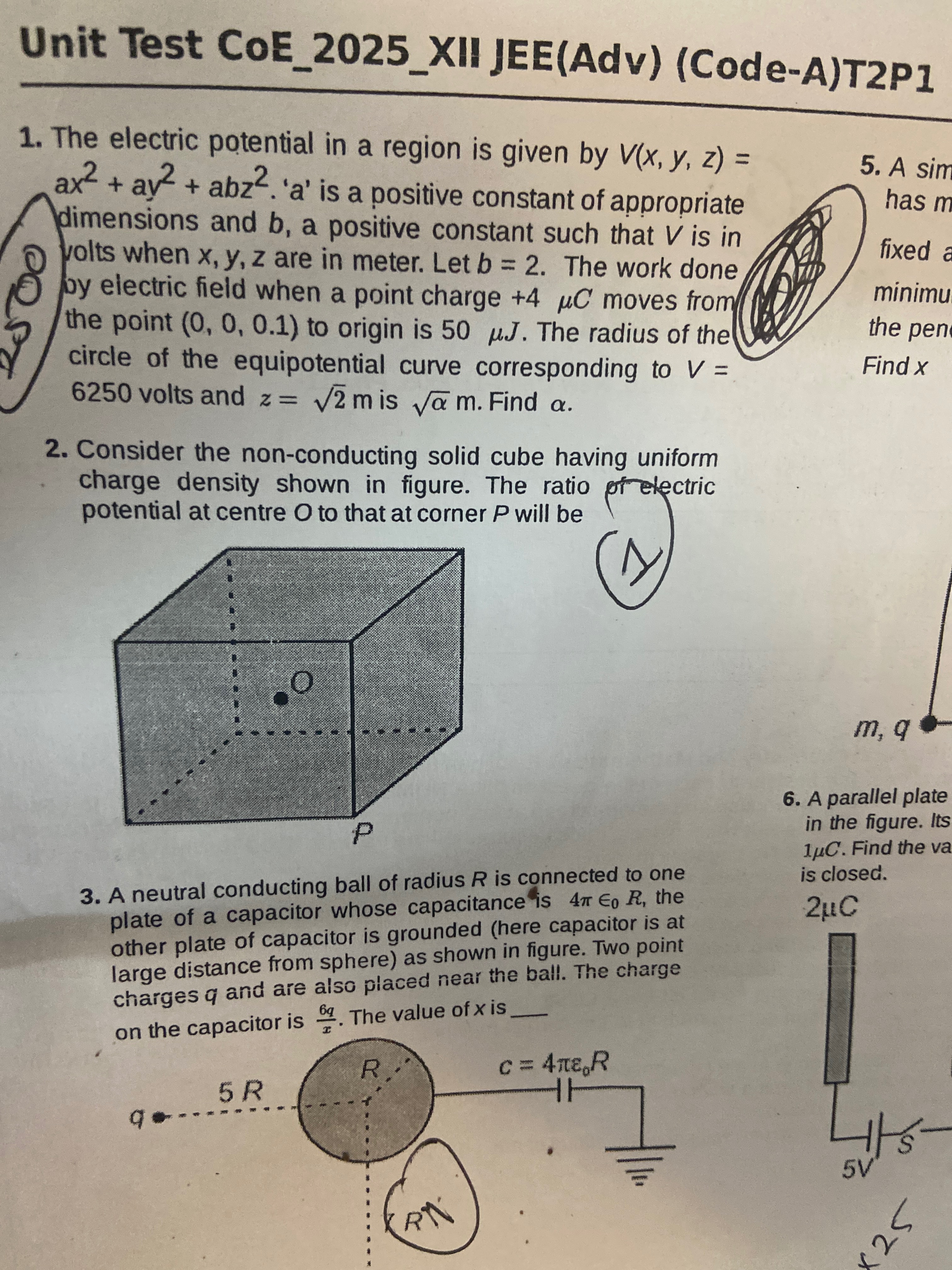Question
Question: The electric potential in a region is given by $V(x, y, z) = ax^2 + ay^2 + abz^2$. 'a' is a positive...
The electric potential in a region is given by V(x,y,z)=ax2+ay2+abz2. 'a' is a positive constant of appropriate dimensions and b, a positive constant such that V is in volts when x, y, z are in meter. Let b = 2. The work done by electric field when a point charge +4 µC moves from the point (0, 0, 0.1) to origin is 50 µJ. The radius of the circle of the equipotential curve corresponding to V = 6250 volts and z = 2 m is α m. Find α.

6
Solution
The electric potential is given by V(x,y,z)=ax2+ay2+abz2. Given b=2, so V(x,y,z)=a(x2+y2)+2az2.
The work done by the electric field when a charge q=+4μC=4×10−6C moves from point A=(0,0,0.1) to origin O=(0,0,0) is WA→O=50μJ=50×10−6J.
The work done by the electric field is WA→O=q(VA−VO).
VA=V(0,0,0.1)=a(02+02)+2a(0.1)2=2a(0.01)=0.02a.
VO=V(0,0,0)=a(02+02)+2a(0)2=0.
WA→O=q(VA−VO)=(4×10−6)(0.02a−0)=0.08a×10−6.
Given WA→O=50×10−6J, so 0.08a=50, which gives a=0.0850=85000=625.
The electric potential is V(x,y,z)=625(x2+y2)+1250z2.
We need to find the radius of the equipotential curve corresponding to V=6250 volts and z=2 m.
Substitute V=6250 and z=2 into the potential equation:
6250=625(x2+y2)+1250(2)2.
6250=625(x2+y2)+1250(2).
6250=625(x2+y2)+2500.
625(x2+y2)=6250−2500=3750.
x2+y2=6253750=6.
The equation x2+y2=6 represents a circle in the xy-plane with radius r=6.
We are given that the radius is α m.
So, α=6, which implies α=6.
